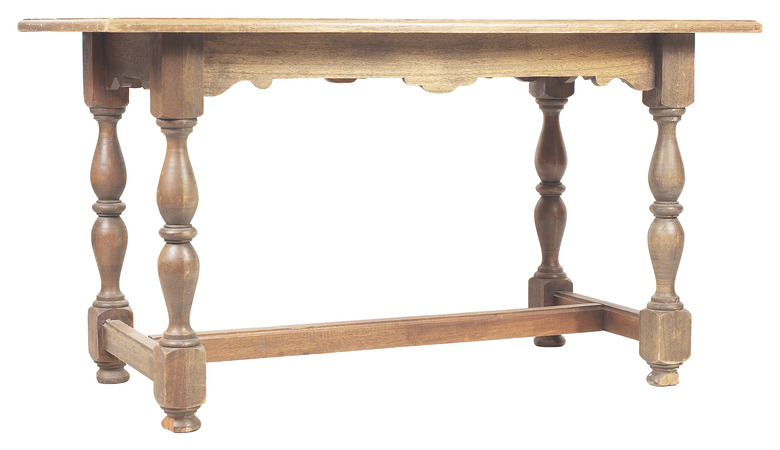Highland Manor Wood Products, Llc Things To Know Before You Get This
Highland Manor Wood Products, Llc Things To Know Before You Get This
Blog Article
All about Highland Manor Wood Products, Llc
Table of ContentsThe Buzz on Highland Manor Wood Products, LlcLittle Known Questions About Highland Manor Wood Products, Llc.Not known Details About Highland Manor Wood Products, Llc Not known Incorrect Statements About Highland Manor Wood Products, Llc What Does Highland Manor Wood Products, Llc Do?
Tidy the broken edges of the table leg to make certain a smooth, solid bond. Thoroughly align the broken items. Use clamps to hold the pieces together temporarily.Removing the legs minimizes the stress they might endure if the table is lugged or loaded poorly, avoiding them from bearing excessive weight or experiencing undue strain. Guarantee that the table, particularly its legs, is safely put in the relocating automobile. The table shouldn't wobble or have the potential to tip over.

The Buzz on Highland Manor Wood Products, Llc
Take the concealing tape and cover your drill little bit concerning inches of the way down the little bit. This is to help see to it you don't drill with the tabletop while making sure the deepness you need for the screws. Meticulously drill each of the screw holes to the appropriate deepness, making use of the marks you made.
Utilize the effect driver to screw each leg firmly into place. It's finest to go one leg at a time to make certain the placement is ideal and each leg is safe and secure before moving on to the following.
(https://highland-manor-wood-products-llc.webflow.io/)
Repeat these actions to deal with any kind of other damaged legs on the table.
Utilize a jig attended reduce them diagonally from edge to catch to generate four corner blocks. Cut a notch out of the rear of the corner block opposite from the diagonal cut to ensure that the notch fits over the top of the leg and supplies extra strength in the corner.
Some Of Highland Manor Wood Products, Llc
Drive one even more screw, centered with the block, into the corner of the table leg. Increase your lightweight table by adding some ballast. This offers to squash errant, slim tabletops, in addition to add some weight to maintain them where they belong. Measure the size and size under the table in between the legs.

For a designer look, use bullnose or profiled moldings rather than hardwood strips. Great deals of tables have integrated stretchers to include stability. Stretchers are horizontal pieces of wood about 4 inches up from the floor. 2 cots run in between the sides of the legs on the table's brief ends, with one lengthy cot connecting the two brief cots in the.

The Ultimate Guide To Highland Manor Wood Products, Llc
Each piece has its own story to tell, and antique table legs play a vital function in the overall aesthetic appeals and stability of these prizes. Restoring them not just revives their appeal but additionally helps maintain their historical relevance. Comprehending antique table legs starts with recognizing redirected here the different types of antique tables and their historical contexts.
Vintage tables come in different designs, such as Queen Anne, Chippendale, or Victorian, each with its special layout and features. Recognizing the type of table you have will certainly guide your repair initiatives.
As an example, French bnisterie furnishings, with its elaborate workmanship, would likely be most worth recovering and could require expert solutions, whereas a table located at a yard sales may not justify the reconstruction price. As you get started on the journey of recovering antique table legs, one of the first and critical steps is to carefully examine these important components of your cherished piece.
An Unbiased View of Highland Manor Wood Products, Llc
Begin by looking at the surface of the table legs diligently. Seek any type of noticeable cracks that might have developed over time. Fractures can vary in size and seriousness, from small surface flaws to deep architectural fractures. Each crack narrates of the table's history, and addressing them is necessary for both visual appeals and architectural security (Wood Furniture Feet).
These divides can endanger the general strength and appearance of the legs. Identifying their visibility and degree is essential prior to proceeding with repair. Butt joints are extra at risk to splitting since they supply a minimal area for glue bonding, making them prone to separation under stress or pressure. Pay very close attention to the joints where the table legs meet the table's frame or apron.
Examine the general structural stability of the legs. Look for any kind of warping or twisting that may affect their security. Take a look at the joints closely to assess the level of looseness. Some joints might only require adhesive and clamping, while others may need additional reinforcement. By carefully assessing the wear and damage, you can develop a detailed restoration plan customized to the particular needs of your antique table legs.
Report this page